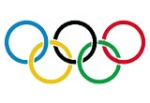Our website uses cookies and similar technologies to provide you with a better service while searching or placing an order and for analytical purposes.
By clicking the Allow Cookies button, you are informing OBAS UK Ltd that you agree to the use of these cookies as detailed in our
Privacy Policy.
Olympic Effort
Early in 2008 the construction of the Olympic Site in East London appeared unwarranted. Even silly. Deep economic turmoil, political change and the talk of horrific budget deficits made spending £9bn on a sporting venue seem ridiculous. Fast forward three years and we now have a stadium that has been built on time, under budget and with an exemplary safety record.
“To complete a complicated project such as this in less than three years is testament to the skill and professionalism of the UK construction industry.” Added John Armitt, Chairman of the Olympic Delivery Authority recently.
“I would like to thank the Team Stadium consortium and all of the workers for their hard work and commitment. It is thanks to them that we can celebrate this huge milestone for the London 2012 project and be proud of what can be achieved by UK plc.”
Understandably Armitt and his team have been highly commended for the way in which they have delivered the project. A total of 240 UK businesses have been directly involved in the construction of the stadium and 5250 people have worked on the project since May 2008. The design and construction has been led by Sir Robert McAlpine, with Populous as the Architect and Buro Happold as the designer of the civils, structural and building services work. Hyland Edgar Driver were the Landscape Architects. The Planning Consultant was Savilles Hepher Dixon.
Here are some other interesting construction facts and figures surrounding the Olympic Venue.
- Over 240 businesses, from Devon to Scotland, have worked on the construction of the Stadium.
- More than 5,000 reinforced concrete columns were installed into the ground, up to 20m deep, to provide the foundations to support the Stadium structure.
- 112 steel rakers and 12,000 pre-cast concrete terracing units hold the spectator seating in place.
- The roof compression truss is made up of 28 steel sections, each one is 15m high by 30m long and weigh 85 tonne. A 1,350-tonne super lift crane was assembled in the field of play to lift them into place between January and July in 2009.
- The cable net roof provides the correct conditions for athletes on the field of play and covering two-thirds of spectators. The roof is covered by 112 panels of white material, totalling 25,000 m². The fabric was fitted by a team of 23 expert abseilers.
- To ensure that the sporting action is illuminated and to meet high definition TV standards, the Stadium is lit by 532 individual floodlights housed in 14 towers. The top of the towers reach 70m above the field of play.
- Each of the 14 lighting tower weighs 34 tonnes and are 28m high. They were lifted into place by a 650 tonne crane over a period of 14 days in March 2010.
- There will be around 700 rooms and spaces within the Stadium, including changing rooms and toilets. The fit-out work has required15,000sqm of plasterboard, 140,000 blocks to create walls, 11km of pipes for drainage, 338km of power cables plus 33km of other data systems cabling and 12km of ventilation ducts.
- The turf for the field of play was grown in Scunthorpe and was laid over a period of three days in March 2011.
- The track will be laid later this year to allow for LOCOG to carry out temporary overlay work which may need cranes and so could damage the track if it was laid now.
- The black and white spectator seats were designed in the UK and manufactured in a factory in Luton. They were fitted between May and December 2010.
- The toilets for spectators are spread out across 32 separate buildings on the podium level and are all now functional.



